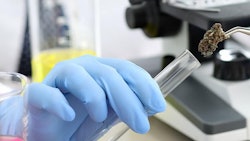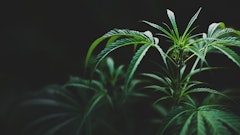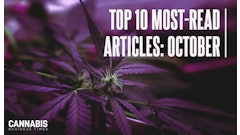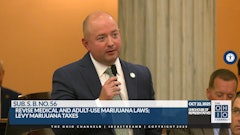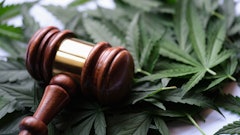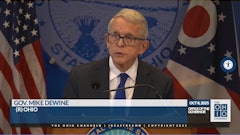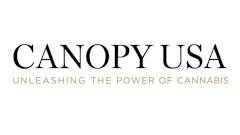
In 2019, Maryland launched regulated hemp production under the 2014 Farm Bill, and roughly 65 growers partnered with various higher education institutions to study the crop.
Eleven of those growers joined forces with the University of Maryland for a study that primarily evaluated hemp’s nitrogen requirements.
And now, more than two years later, the researchers leading that study have a message for farmers contemplating hemp production: use caution.
“We never said don’t grow it,” Dr. Andrew Ristvey, a commercial horticulture specialist with the University of Maryland Extension, told Hemp Grower. “But we were saying, ‘Be cautious because we don’t know where we sit with the future market.’”
Through the university’s research, Ristvey and his colleague, Dr. Nicole Fiorellino, an assistant professor and agronomy specialist with the University of Maryland Extension, discovered several issues with hemp production in Maryland that could diminish the crop’s economic viability in the state.
For starters, Ristvey said, Maryland has some of the most progressive nutrient management regulations in the country to protect the Chesapeake Bay.
“Not many people know about it that aren’t from Maryland, but farmers are very much aware of the nutrient management regulations,” he said. “They have to deal with them every year, and it’s a complicated process, but any new plant that’s being grown, especially with the potential for high production, the University of Maryland needs to do the research to find out what the nitrogen and phosphorus requirements are. Those are the two nutrients that are being monitored because of their potential to disrupt surface waters with nutrient pollution.”
Another issue, Ristvey added, is pest and disease management. The Mid-Atlantic region’s climate is hot and humid—the perfect environment for various pests and diseases that can befall hemp crops.
Not many pesticides or fungicides are labeled for hemp, and Ristvey said, especially in 2019, there was almost nothing farmers could apply to control pests and diseases, and any number of them could decimate a crop.
“The biggest insect problem that we have is corn earworm, which jumps over from the corn and gets into the hemp flowers, and then it will damage hemp flowers and they rot,” he said. “If you’ve got a rotten flower head, how are you going to sell that? We don’t know the mycotoxins, the fungal toxins that might be transferred over to the hemp oil if it’s being processed.”
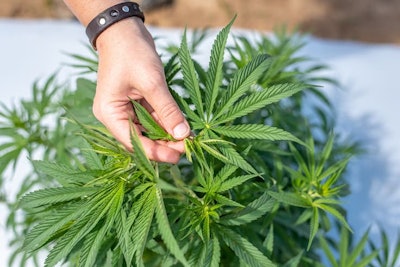
Many of Maryland’s hemp farmers started growing floral varieties for CBD production, Ristvey said, and another potential pitfall is declining CBD prices—that is, if farmers can find anyone to purchase the biomass at all.
“All these farmers were looking at this as being a huge boom,” Ristvey said. “It was fantastic. Everyone was excited. October came around, everyone harvested their hemp, and the price dropped 25%. Farmers didn’t want to sell their crop because they wanted those prices back again. So, they held onto it. Some … were selling floral hemp or the flowers, which were [for] smoking, and that was relatively lucrative if you could find someone who was going to buy it from you.”
Although some processing companies have started up in the state, there is still a shortage of processors to turn biomass into finished CBD products, Ristvey said, which adds another complication to farmers’ plans.
“A lot of the processors dropped out and didn’t do what they promised,” he said. “There were a lot of bad stories associated with that, which was really unfortunate.”
At the end of the 2019 season, many farmers struggled to break even, let alone make a profit, Ristvey said.
“It was an unfortunate loss,” he said. “And with the prices continuing to fall past October 2019 and the amount of labor involved in production, … it wasn’t working out for farmers. … Certainly, I think there’s a lot of potential of this crop for so many different reasons, but we’ve got to find the processing, and we’ve got to make sure our farmers investing in this are actually making a profit.”
Proceed with Caution
In early 2020, Ristvey and his team started warning Maryland’s farmers that hemp may not be an economically viable crop in the state, at least under current market conditions.
“My colleague, Dr. Fiorellino, and I … were saying, ‘Look, if you’re going to get into this, you’ve got to be careful. You’ve got to be wise. Don’t get into it thinking you’re going to make a million dollars because there are a lot of externalities, [like] the upfront costs. Where are you going to sell it?’”
Some of the farmers who launched into the hemp market in 2019 dropped out in 2020, Ristvey said, and the University of Maryland is now refocusing its research on whether hemp fiber and grain may be more lucrative than CBD production for the state’s growers.
However, successful fiber production hinges on additional processors coming into the state—and many farmers are hesitant to grow hemp until processors are up and running.
“There’s some interest in processing coming in, but processing means biomass, and no farmer’s going to grow it unless there’s processing,” Ristvey said. “So, what comes first, the chicken or the egg? My colleague, Dr. Fiorellino, and [I] are trying to figure out how to utilize hemp in different ways as a tool to maybe do some nutrient management, pulling phosphorus out of the ground, … so we have biomass, and then processors might come in.”
In the meantime, Ristvey urges hemp farmers to do their research and have contracts in place to sell their crop before it’s in the ground.
“Have a signed agreement that whatever processor buys your stuff is going to pay the price they promised you, … so people aren’t caught off guard by growing all this hemp, processing it, and then having tons of it in storage, waiting to sell it,” he said. “That’s pretty much the bottom line to what Dr. Fiorellino and [I] are saying. … Be real careful stepping into this one because a lot of people have already gotten burned."









